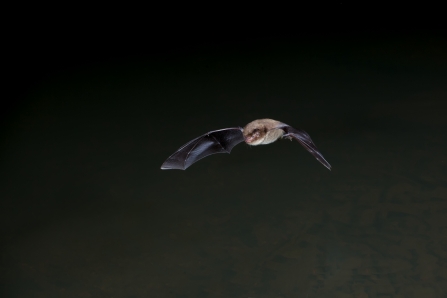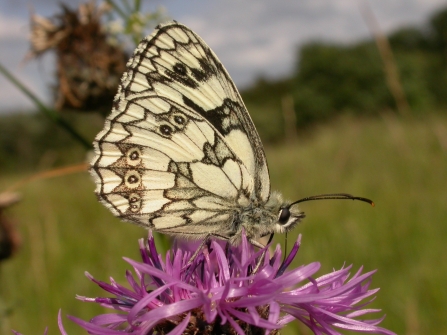
Wildlife to look for in July

Hummingbird hawkmoth
Hummingbird hawkmoths are so named because they resemble a hummingbird as they hover (audibly) to feed on flowers before darting to the next. They prefer to feed on plants with long flowers like viper’s-bugloss, red valerian, honeysuckle or buddleia so keep an eye out if you have any of these in your garden.
Hummingbird hawkmoths fly during the day and if you do see them in your garden, keep a regular eye out as they’re known to return to the same flowerbeds at the same time of day to feed.

Meadow brown
Meadow brown butterflies are very common and widespread. Their caterpillars feed on grasses so why not allow an area of your garden to grow long. You may even find some wild flowers appear among the grasses, particularly if you scatter some yellow rattle seed which helps to slow the growth of grasses and gives more room for flowers.
Meadow brown butterflies, particularly the females, may be confused with gatekeeper butterflies, but those have two white dots on their wings instead of one and tend to rest with their wings open.
Crickets and grasshoppers
Grassland and heathland can be filled with the buzzing of crickets and grasshoppers in summer. If you get close enough to see them, try this general rule to decide which is which: crickets have long antennae and grasshoppers have short antennae.

Daubenton's bat by Dale Sutton/2020vision
Bats
At dusk on warm evenings, look out for bats flying around hunting for insects to eat. You can often spot bats over your garden – a tiny pipistrelle can eat around 3,000 insects every night!
Near rivers you may see Daubenton’s bats (above), which fly low over water to scoop up insects near the surface with their feet or tail.
Slow worms
Slow worms are actually legless lizards, not worms or snakes. They don’t tend to bask in the sun like other reptiles, instead they stay under log piles or in compost heaps where rotting material provides warmth.
If you do see one, don’t try to pick them up, they’re not only a protected species but may shed their tails as a defence mechanism.

Banded demoiselle
Banded demoiselles are one of the easiest damselflies to identify with their distinctive dark bands on their wings. Look for them flitting by slow-moving streams and rivers as well as ponds and lakes.
The males are metallic blue, with a distinctive dark band across their wings (above), and the females are a shiny green.
A simple tip to know if you're looking at a damselfly or dragonfly is that damselflies tend to hold their wings closed along their backs when at rest. Dragonflies hold their wings out away from their bodies.
Teasel by Richard Burkmarr
Teasel
Teasel is a tall, distinctive wild flower with its prickly stems and egg-shaped seed heads. The ring of purple flowers on teasel are loved by bees. Later in the year goldfinches feast on their seeds.
They're a biennial plant, meaning that they flower in their second year, and an attractive addition to any wildlife garden.
Froglet by Richard Burkmar
Froglets and toadlets
Look out for tiny froglets and toadlets leaving ponds, particularly if you have a garden pond - beware when you're cutting the grass.
How to tell which is which? Frogs have smooth skin and tend to hop off if disturbed. Toads have a rough, warty skin and will crawl rather than jump.

Marbled white butterfly on knapweed by Philip Precey
Marbled white
Marbled white butterflies are unmistakeable with their black and white wings. They love feeding on purple flowers, such as field scabious, common knapweed and wild marjoram on sunny grassland.
The marbled white is expanding its range north and eastwards, possibly as a result of warming due to climate change.
7-spot ladybird larva by Les Bins
Ladybird larvae
Just like adult ladybirds, ladybird larvae are a gardener's friend, feeding on aphids. The larva above is of a seven-spot ladybird, but there are many others you might see too. They all form a pupa, just like a caterpillar does to become a butterfly, before the adult ladybird emerges.
Ladybird larvae identification sheet
Stay connected with others
Join our online community, linked by a love of nature and wildlife.
Follow us on Twitter, Facebook and Instagram where we share lots of beautiful photos of local wildlife, ideas to enjoy nature and ways to help the natural world.
Share your stories, sightings and ideas with us too. Tag us with @BBOWT.
You can join our friendly Facebook group to share photos of wildlife that you’ve seen in your garden, get help identifying any you’re not sure about, and share ideas for getting your daily dose of nature.

